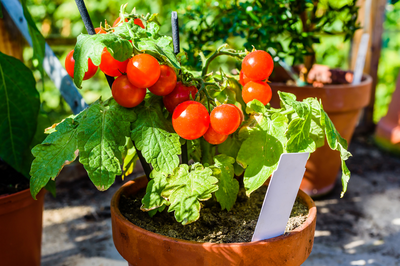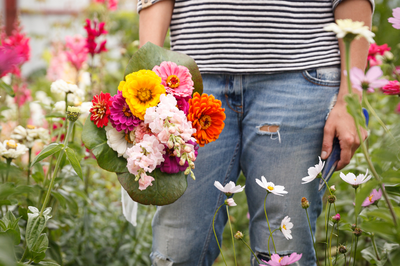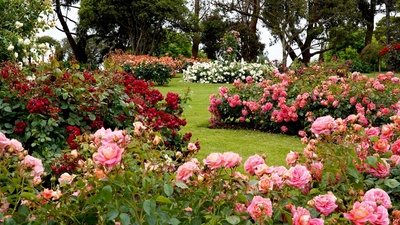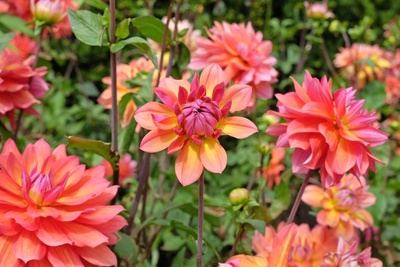
You say clem-ay-tis, I say clem-ah-tis; whatever you pronounce it, no garden should be without one of these beautiful climbing plants. With so many different clematis varieties available, there’s one in flower just about every month of the year, and right now, it’s the turn of the spring-flowering clematis to dazzle with their display of gorgeous blooms.
Choosing the right clematis
Clematis x cartmanii ‘Joe’ is ideal for small spaces. A small evergreen clematis small enough to grow in a pot, it’s a sensation in spring, smothered in starry white flowers. It needs a sunny, sheltered spot.
If you have a long fence that needs covering, Clematis Montana var. Rubens ‘Tetrarose’ is the answer. This fast-growing deciduous climber can eventually reach 5m x 3m (16ft x 10ft), and in spring is a mass of gorgeous scented pink flowers. Shoots will twine around anything available, so provide a sturdy support framework of wires for it to cling to. This hardy clematis will grow in the sun or part shade.
Clematis Alpina is also good in shade. It looks dainty and delicate, with its bobbing, bell-shaped flowers, but it’s surprisingly robust, even coping on north-facing walls. Clematis Alpina ‘Frances Rives’ AGM is widely available and has beautiful violet flowers.
How to plant a clematis
There are a few golden rules to follow when planting a clematis:
-
All clematis prefer to keep their feet cool, so always plant with the roots in shade. You can also put bricks or slate around the base of the clematis to shade the roots.
-
Plant your clematis deep, so that the point at which the stem emerged from the compost in its pot is at least 15cm (6in) below ground level. If your clematis develops wilt (a fungal disease that clematis are prone to), planting deep will help it to re-grow from the portion of the stem that is below the ground.
-
Clematis appreciate fertile soil, so put a shovelful or two of compost in the planting hole before planting your clematis.
-
Water your clematis regularly in its first year after planting, especially during dry periods.
How to prune a spring-flowering (group 1) clematis
Clematis are divided into three groups according to when they flower, and spring-flowering clematis falls into group 1. Unlike the other two groups, group 1 clematis don’t necessarily need to be pruned every year. However, the larger varieties, especially Clematis Montana and Clematis armandii, may need pruning to keep them from getting too large. If you need to prune your spring-flowering clematis to keep it to size, wait until after it has finished flowering, then trim over-long shoots, cutting back to a pair of healthy buds. To renovate an old, congested group 1 clematis, cut back all stems almost to the base, then feed, mulch and water regularly.
Nothing lifts the spirits like the sight of flowers in spring, and we have a fantastic range of clematis and other spring-flowering plants in stock. Contact us now to find out more.




